Recent Articles
Popular Makes
Body Types
2018 Honda Civic Si vs 2018 Honda Civic Type R: Which is for you?
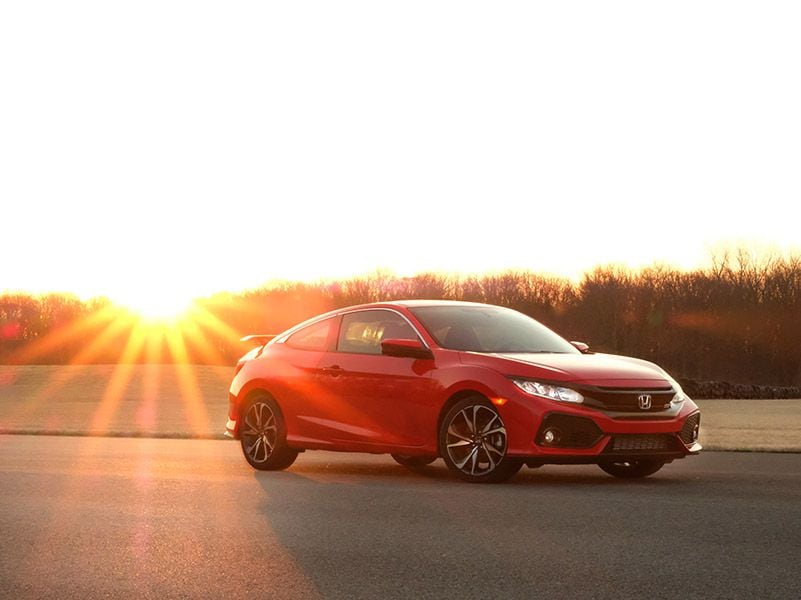
2018 Honda Civic Si hero ・ Photo by Honda
So how do you like your wasabi — hot or extra hot? That is the choice you are confronted with when you make the decision on whether the Honda Civic Si or Civic Type R will be the car to grace your garage. Frankly, choosing between these two vehicles is an excellent problem to have, something like choosing which knockout cheerleader you’re going to take to the prom. You can’t go wrong here; you can only go right or righter.
One of the biggest questions to answer is not how much you like each of these very worthy pocket rockets but instead how much you like $10,000 — because in nice round numbers, that is the difference in price between a typical Civic Si and a typical Civic Type R. Not that either is typical of the compact-car class as a whole, mind you. We’ll get into that next.
Who are these guys?
You probably know the Honda Civic as the highly awarded bedrock compact commuter car that millions have enjoyed through the decades. Now in its 10th generation, the model is known for its bulletproof build quality, its economy, and its fun-to-drive spunk.
The Si and Type R versions of the model take it in a decidedly performance-focused direction. Today’s Civic Si is the eighth separate expression of the line that began with the Civic CRX Si way back in 1985. The Type R doesn’t date back as far. The sub-model was introduced in 1997 elsewhere in the world, and it is now in its fifth generation. But it happens to be the first Type R officially sold in the United States. Another distinction: It is the fastest, most powerful Honda car out there.
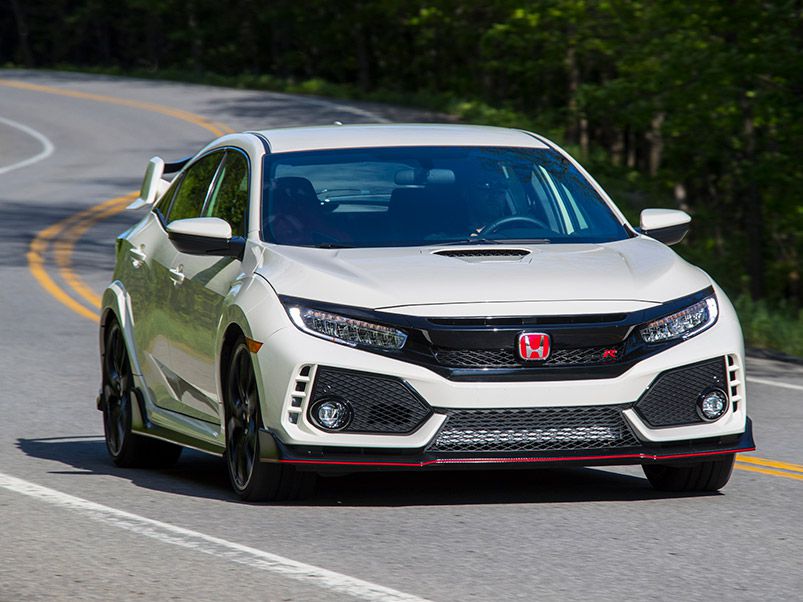
Photo by Honda
Power and More Power
Honda hasn't historically embraced turbocharged engines in the way some other brands have, but the company is all-in with both the Civic Si and the Type R. For the first time in all its generations, the Si uses a forced-induction engine — a 1.5-liter direct-injected and turbocharged DOHC four-cylinder with dual variable cam timing. Peak output of 205 horsepower is accompanied by 192 pound-feet of torque. Turbocharging enables the torque peak to arrive 2,300-rpm earlier than in the non-blown engine, and torque is available over 70 percent of the rev range.
As cool as that is, it pales a bit in comparison to the 306-horsepower 2.0-liter DOHC direct-injected i-VTEC turbocharged engine that drives the Type R. It churns out 295 pound-feet of peak torque available from 2,500 to 4,500 rpm.
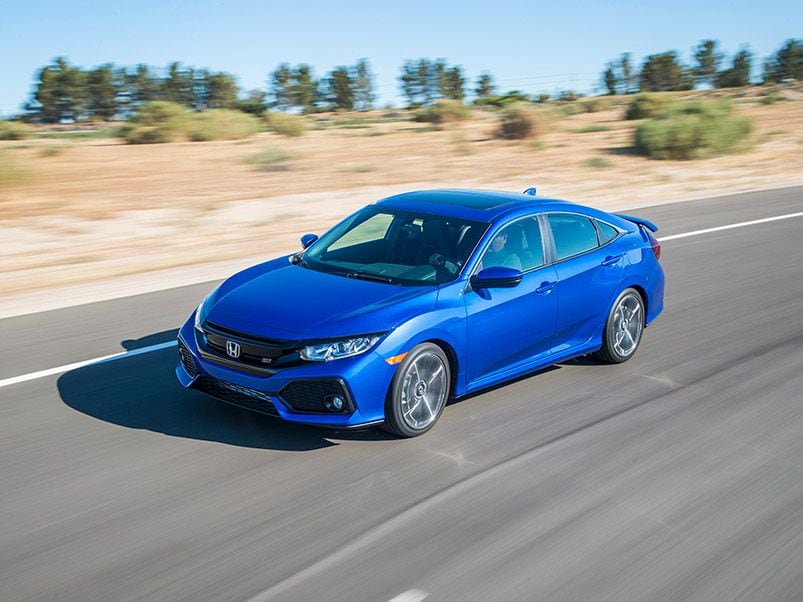
Photo by Honda
Running Gear for Fast Running
All Civics start with a rigid bodyshell designed to minimize the flex that would result in questionable handling. The sport-tuned Civic Si suspension incorporates an adaptive damper system. The suspension upgrades versus run-of-the-mill Civics include stiffer spring rates, more rigid stabilizer bars, and solid front and rear compliance bushings. (The latter are shared with the Type R.) The Si offers two driving mode options: normal and sport. Normal is comfort-oriented while sport tightens up the suspension damping characteristics and tweaks steering and throttle response.
The Type R suspension is more purpose-oriented, with the primary purpose being to perform well on a track. The front suspension features a dual axis strut arrangement with an anti-roll bar, while the rear is multi-link with an anti-roll bar. Adaptive dampers are fitted at the front and rear.
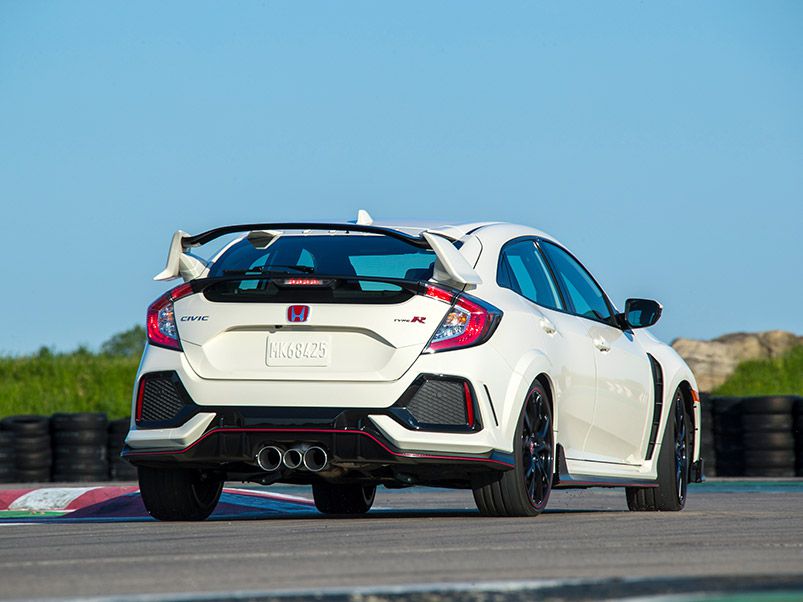
Photo by Honda
Turning and Stopping
One important both Civic Si and Type R share is the advanced electric power steering system. The dual-pinion variable-ratio rack-and-pinion steering has a lot of work to do, given that both variants are front-wheel drive. But it manages to handle all the sometimes-conflicting forces while offering good feel. The quality steering is accompanied by upgraded brakes. The Si is equipped with substantial 12.3-inch front brake rotors.
The Type R trumps that with Brembo four-piston front calipers. It offers brake assist with electronic brake force distribution. The Type R also puts more rubber on the road than the Si. It has 245/30ZR20 Continental SportContact 6 summer performance tires. The Si counters with 235/40R18 tires, available in summer or all-season varieties.
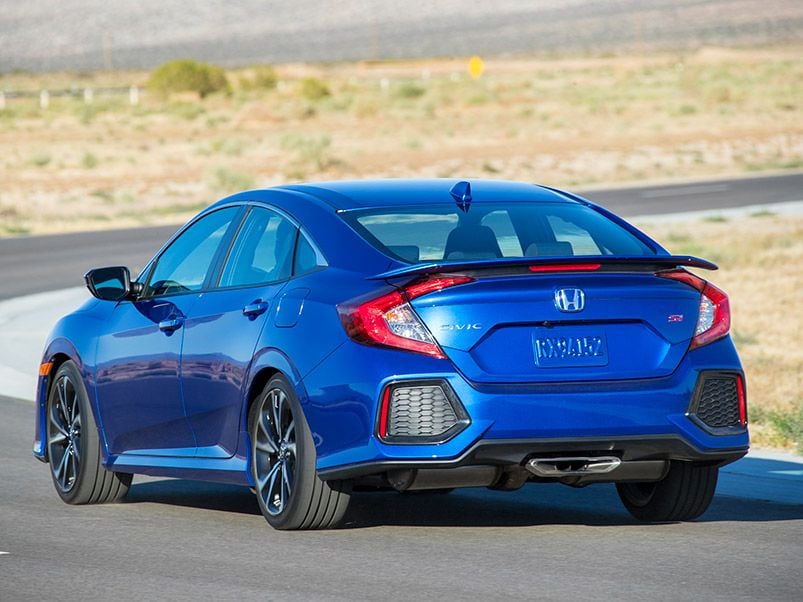
Photo by Honda
Getting Power to the Pavement
There was a time when 200 horsepower was considered the absolute maximum amount of power that could be channeled through a car's front wheels without creating pronounced and sometimes dangerous torque steer. But now, through a combination of driveline and electronic refinements, the front-wheel drive Civic Si delivers its 205 horsepower without ill effects. The front-drive Type R manages the even more difficult task of channeling 306 usable horsepower with its dual axis front strut suspension and electronic controls.
The only transmission available in both the Si and Type R is a short-throw, six-speed manual. In the Type R, the driver can adjust the automatic rev-matching system for smooth, quicker shifts. Both models are equipped with helical limited-slip differentials.
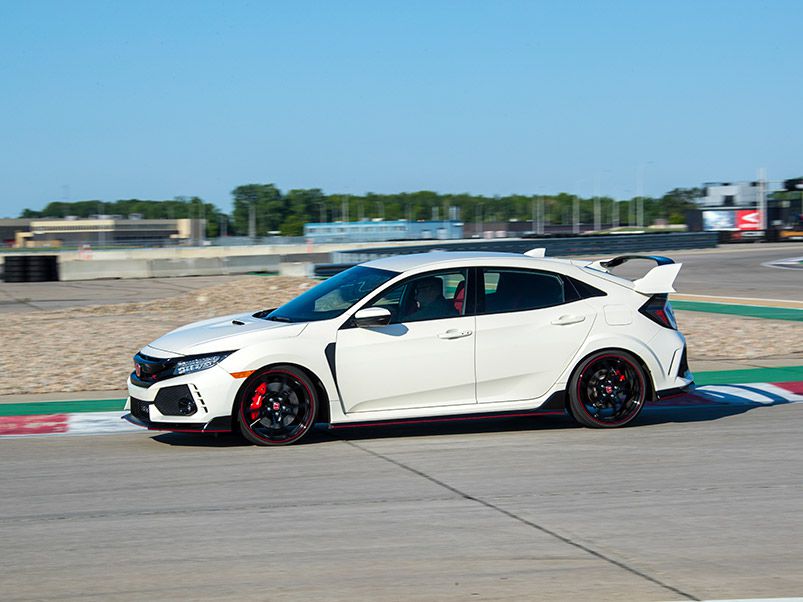
Photo by Honda
Go-Fast Stylin’
Getting looks is part of the appeal of both the Civic Si and Type R. The Si sedan and coupe feature a gloss-black wing-style front fascia with prominent lower air intakes, 18-inch split five-spoke alloy wheels, 235-series low-profile tires, and chrome-finished hexagonal exhaust trim. The Si sedan has a decklid wing spoiler incorporating an LED brake light, while the Si coupe has a raised wing spoiler.
The Type R takes the add-ons to the next level of cool or obnoxious, depending upon your point of view. The signature visual piece is the massive rear wing that might remind you of the Gateway Arch in St. Louis. The Type R also uses a great deal of red highlighting to emphasize its performance orientation.
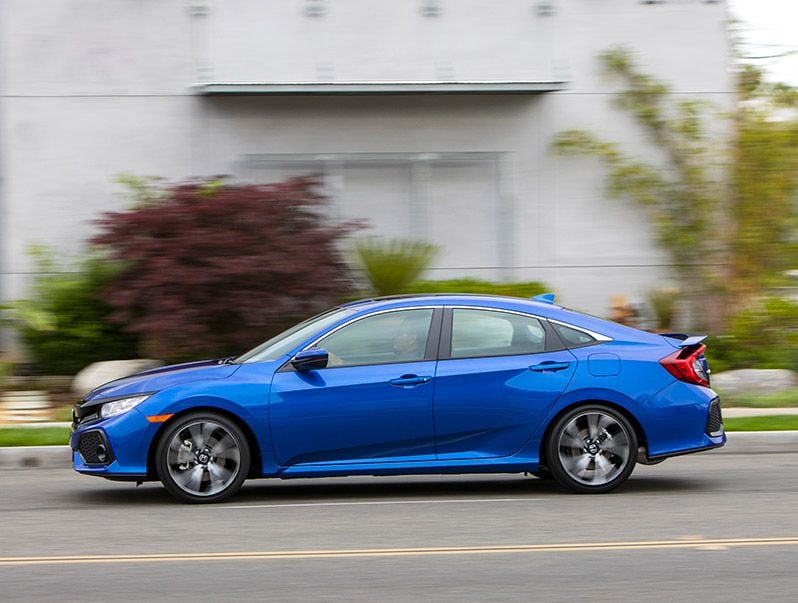
Photo by Honda
Fast vs. Faster
If your decision hinges strictly on performance, there is no question that the 306-horsepower Civic Type R should be your choice. Its performance credentials are absolutely stellar, especially for a vehicle based so closely on a popularly priced compact car for the masses. The Type R will vault from 0-60 mph in just 4.9 seconds, and when it comes to ultimate cornering ability, it offers more than 1.0 g of grip. On the track the Type R handles transitions, elevation changes and surface imperfections with aplomb, thanks in part to its adaptive dampers.
In comparison, the Civic Si offers laudable performance; it just doesn’t climb to the same level as the more powerful Type R. For example, the Si can zoom from 0-60 mph in a very creditable 6.3 seconds. Depending on tires, the ultimate grip can near the magic 1.0 g level, and its ride quality in everyday use is flawless.
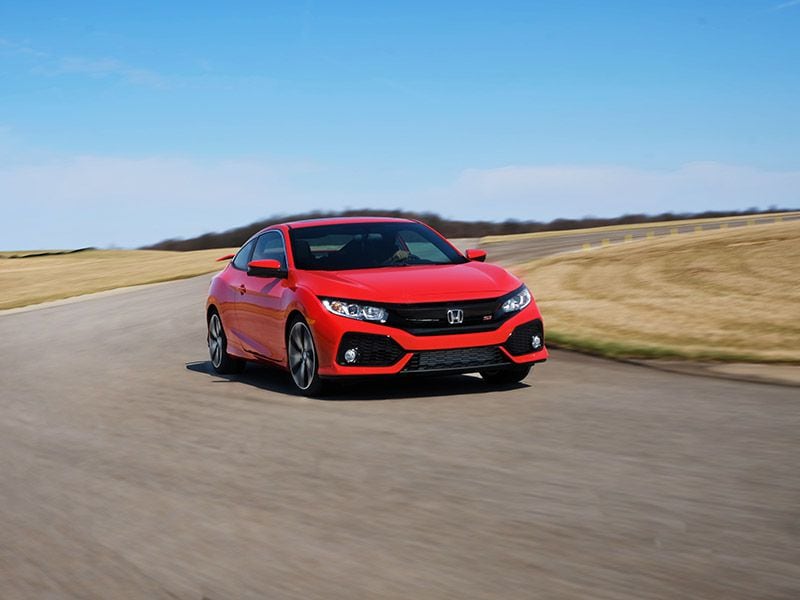
Photo by Honda
What is it worth to you?
There is absolutely no doubt that both the Honda Civic Si and the Civic Type R are terrific all-around vehicles. When you look at their prices, there is also no doubt they are both great values. But the price differential is substantial and could be the deciding factor for you. The Civic Si coupe or sedan equipped the way you would typically want it will have a suggested retail price of right around $25,000. Whether you want four doors or two makes little difference because the performance is very similar.
In contrast, the Type R five-door hatchback carries an MSRP of $35,000 or so. Yes, the Type R’s performance is better in every category. In fact, the Type R’s performance-per-dollar ratio is exceptionally high in comparison to every car on the planet. The question you have to answer: Are the Type R’s added performance and over-the-top design worth an additional $10,000 to you?
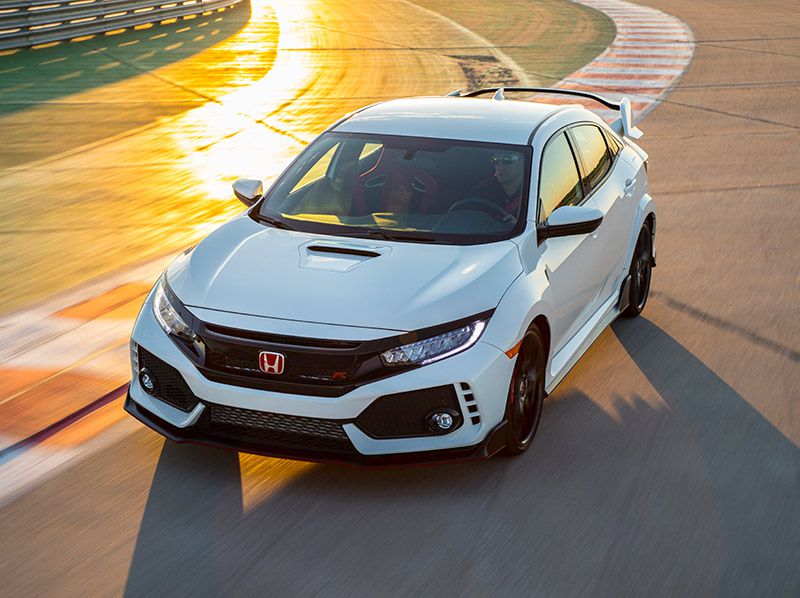
Photo by Honda